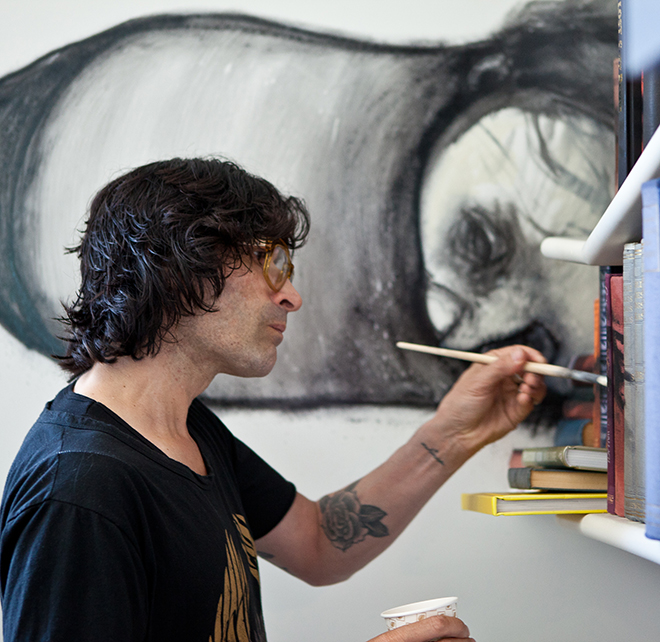The Arty Side of MIFF
Anthony Lister burst into the street art scene, when the then 19 year old was commissioned by the Brisbane City Council to paint the traffic signal boxes around the city. Thus began the prosperous career of Lister, which has led him to being one of Australia’s most prominent street artists.
Lister’s career and personal life has not been without incident. At the very core of publically pursuing a career of being a street artist, you are effectively outing yourself as a vandal. With labels such as “vandal” or “criminal”, the public can be harsh critics of these sort of characters. But in the near twenty years that Lister has been a street artist, it has entered into the mainstream side of art, and is accepted a lot more with the more traditionally focused arts community.
Lister’s work has evolved over time. His first works to gain him notoriety globally were the Dancer series and Superhero series. The works were a mix of delicate fine art with street art edge. His distinct faces can be seen all over the world where he’s exhibited, from LA and New York City, to Lisbon and Milan and closer to home across Australia.
Have You Seen The Listers? Delves into both the personal and professional life of the complicated yet talented artist. Exploring his personal relationships including the breakdown of his marriage and spiral into addiction.

From the opposite end of the spectrum, Namatjira Project will also be shown at MIFF. Albert Namatjira was a prolific Indigenous figure and the first Indigenous person to be granted Australian citizenship. Albert lived a difficult life, exasperated by Australia’s ostracising of Indingeous peoples.
He was a successful and talented artist, who exhibited his works around Australia. They blended the ochres and rugged Australian landscape common among Indigenous art, but in a more “western” approach. This stylistic approach made it so Albert was popular and wealthy. However, as was customary, Albert was expected to share his wealth with his extended family – this tradition meant that at one point he was supporting over 600 people.
In 1957, Albert was wrongfully accused of supplying alcohol to Indigenous peoples, and sentenced to time in prison. There was effective community backlash to the sentencing but he still spent time in prison, where health complications began to affect him. After an early release from prison, the health complications had taken over and he died shortly after. In 1983 the Australian Government sold his copyright to an art dealer although he had surviving family.
The film Namatjira Project explores the prolific and incredibly important figure, and his family’s continuous fight to earn back the copyright of his work. A powerful and hugely important film that highlights the ongoing issues between western and Indigenous Australia.

See the dark and gritty side of street art this year at MIFF. Have You Seen The Listers? Screens three times over MIFF. Make a night of it and crash at The Cullen afterwards, surrounded by the daring and edgy works of Adam Cullen.
Make a weekend of it, and come to one of the two sessions of Namatjira Project during MIFF before staying amongst the art works of John Olsen at The Olsen, a continuation of Australian artist’s fascination and interpretation of the rugged landscape that makes us so unique.








